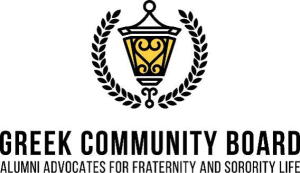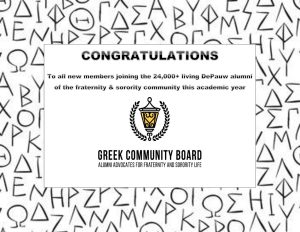
When the doors to the Experimental Biology Annual Meeting open on April 20th, at least 15,000 scientists from around the world will pour in. Two of DePauw's very own will be among them.
Seniors Maria Haag and Adedoyin Johnson have both been named finalists in this year's undergraduate competition section of the Experimental Biology Conference, and will head to Boston, Mass. for a four-day biology event full of presentations, networking and (hopefully) award winning.
Professor Pascal Lafontant , who has helped both students all along the way, couldn't be more impressed.
"It is truly surprising that both students were selected as finalists. I really wasn't expecting that," Lafontant said.
While two students out of 15,000 might not seem like many, for a small liberal arts college in the middle of Indiana, those numbers are quite impressive. It gets even more impressive when the pedigrees of the other 14,998 are considered.
"99 percent of these people are researchers and professors at big institutions, and then there are a few undergrad students," Lafontant said.
Even the other undergraduates hail from big research institutions, like Cornell and John Hopkins, which can be intimidating to researchers from smaller schools, like DePauw.
Johnson considers herself more than up for the challenge.
"The thing about research is that no one knows more about your research than you do because you're the one doing it," Johnson said.
However, she admitted to feeling nervous as the date approaches.
"In some ways I'm scared," Johnson said. This is going to be the first major conference I've ever been to."
But Lafontant's dedication to the DePauw's biology department has ensured that while Johnson might be new to the conference scene, DePauw isn't.
"Two years ago, Tanmoy Das, who was a junior here at the time, was a finalist at this same conference," said Lafontant.
And Das, who was one of eleven undergraduate finalists, most of whom came from large research institutions, didn't just final: he won.
"It was great when we found out that Tanmoy was a finalist, it was even better when we found out he had won-and it was great for him because he won $500."
While Lafontant's impressive track record makes it seem that DePauw is the place to be for biology research, both he and his two student finalists admit there have been drawbacks.
"We don't have all the resources that institutions established specifically for research have," Lafontant said.
Often, Lafontant would take a few students from his lab on "field-trips" to larger institutions that boasted of more precise technology. He laments though, that with lab classes of six or seven, that he was only able to take one or two students along for these half-day ventures.
Johnson added that with DePauw's many requirements, it's often hard to find enough time in a day for both classes and research. Though DePauw does offer independent research credits that give credit for lab time and are worth anywhere from one-fourth of a credit to one credit, this is often not enough.
"You have to find your way around this and that; some semesters I have research in my schedule, some semesters I don't and I have to find extra time for it. Research is hard, and this has been a slow process," Johnson said.
"Students are stretched," said Lafontant. "They have a lot of things going on, they have extra-curriculars on top of their normal responsibility ."
But DePauw's biology department makes up for strained schedules and a lack of access to high quality equipment is other ways.
"I'm working on this lab with Dr. Lafontant," said Haag, "but it's my project. I'm the one who presents it. When you go to a larger research institution you're just helping out a grad student: you don't experience that same ownership of a project."
Haag's experiment is no science-fair project, either. She has, for the last two years, been focusing on heart regeneration in gold fish. Other studies have proven that some species of fish are able to completely regenerate their hearts after a heart attack, and Haag is attempting to discover if goldfish operate the same way.
Johnson's experiment is also fish related, with Das, winner of the Experimental Biology undergraduate award of 2011, playing a key role in getting this research off the ground.
Johnson, who is studying the side effects of cancer drug Doxorubicin using a Giant Danio fish, said Das "was the one was who really started this project. He had the idea, and then he pretty much dumped it on my head and said, 'you go with this and see what happens."
As thrilled as Lafontant is that both students managed to make it this far "the reality now is that they're going to have to compete against each other-which I don't like," he said.
However, the two students doing the competition take a much lighter view of matters.
"We've laughed about it a little bit, but it's really just awesome that we both got this far," Haag said.
Johnson agreed, adding, "we're not competing, we're from the same lab. If she wins I know I'll be totally happy-but I've got dibs on some of that money."
Lafontant admitted that while the success is nice it is only a byproduct of the knowledge, and he wants both Johnson and Haag to walk away with more than a plaque.
"My goal is to have students start to think of themselves as scientists."
And it's not just the students' personal achievements as researchers that should be celebrated; Lafontant stressed the networking possibilities this conference holds for both young women.
"That's another aspect: just getting them to interact with other scientists. They can see those people that they've read about, they can actually meet those people."
So while all three are hoping that DePauw can take home a "W" come April, they are quite proud as it is.
"It's a huge honor to be able to say I made it this far as an undergrad," Haag said. "This little school in the middle of Indiana has two students going to this huge conference."


